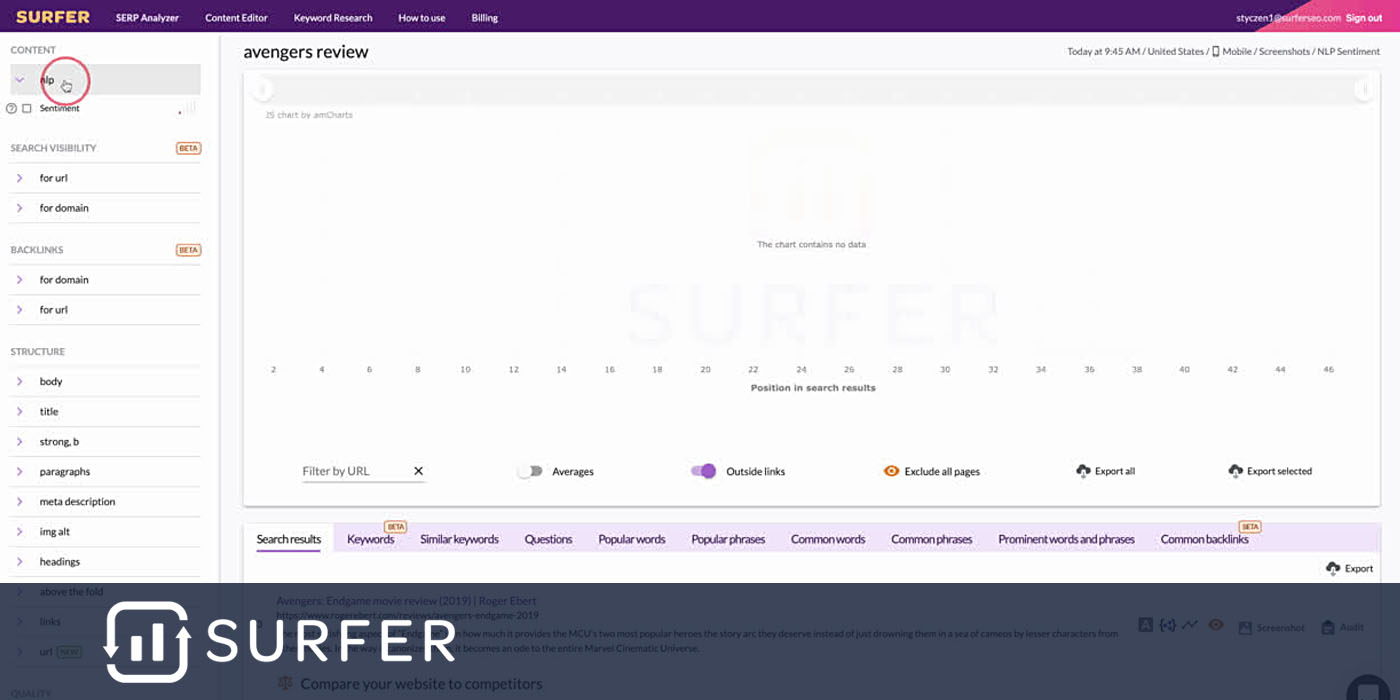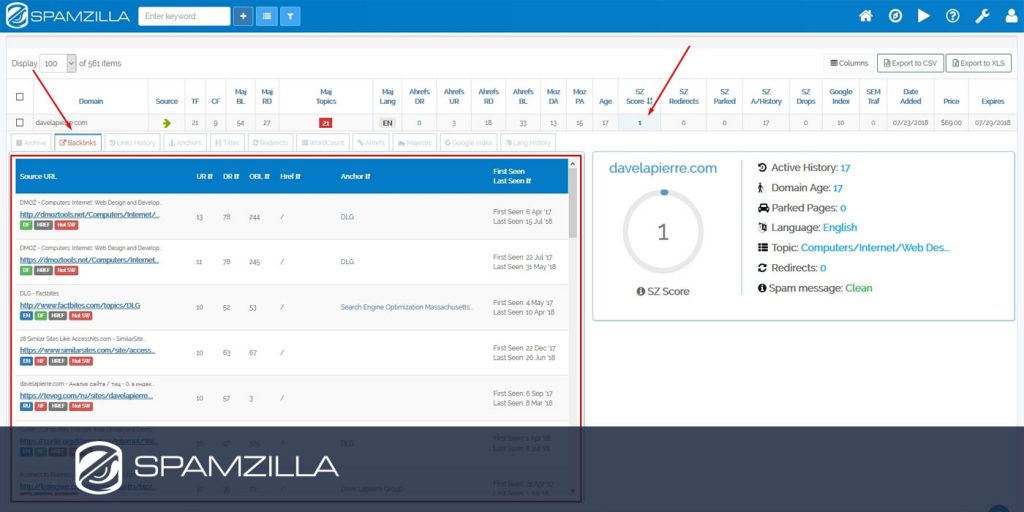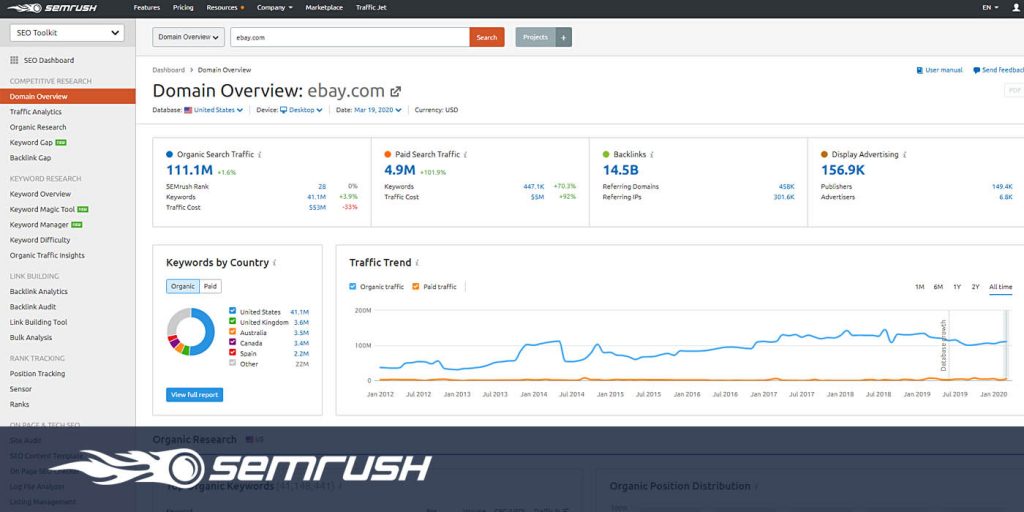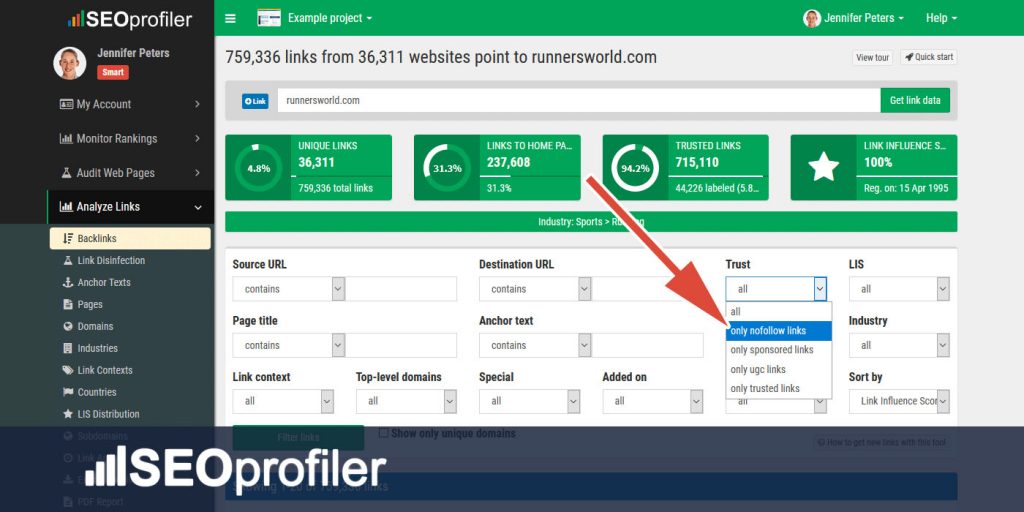What is Surfer SEO
Surfer SEO is a search engine optimization tool which aims to help websites and pages regardless of what Google or other search engines does. This Surfer SEO review looks into the methods and strategies which Surfer SEO uses to come up with suggestions on how to rank.
Online marketers are always on the lookout for new tools, methods and strategies to give them the edge in ranking on search engine results pages (SERP). At the same time, Google and other search engines have been improving their algorithms to keep spammers out while at the same time providing meaningful, relevant, credible and authoritative search results for their users.
Some of the newest search engine optimization tools, like Surfer SEO, aim to skirt the search algorithms and go straight to analyzing the results and using these results to improve website rankings.
There is an assumption that on-page SEO aims to make the website fit the search engine algorithms. It pits the website against the image of an ideal website. The ideal website is supposed to be what will rank for Google. At least, this is the impression you get when you blindly follow the Google Webmaster Guide without understanding what Google wants to provide to its users.
However, there is a different point of view worth exploring. The viewpoint is that the websites are in a race to the top of the rankings, based on the guidelines. The algorithms follow the guidelines. The guidelines are published, and the algorithms are never published.
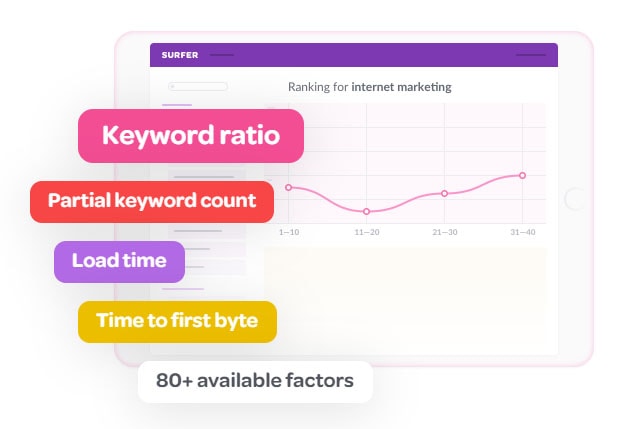
To put it in another context, there is a ranking, and there are pages which rank. Using on-page optimization to compete against those pages, it is only important to know what the others are doing and to emulate them accordingly. Surfer SEO provides this information in an actionable form.
Once you know who your competitors are, then you would know how to beat them to the first page of the SERP. You study the competition, what they do, where they post, and ranking factors. Years back, this strategy involved posting backlinks wherever the competition was posting them. After some algorithm changes, it became a race to post the best, most credible original articles, intending to become the topic or keyword authority.
Those guidelines have not changed. What has changed are other ranking factors which were not considered before. The question remains, that to rank, what does a website need out of SEO tools? What do the website owner, the admins and developers need to do?
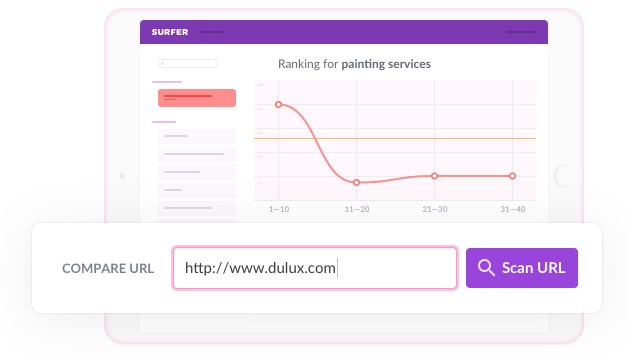
What can an SEO tool contribute?
Surfer SEO can contribute a lot towards understanding the SERP. It polls the top 48 of the SERP and analyzes these pages. It gives all the information and ranking factors about the top search results. The data includes the length of the article, the keywords used, how many images, the frequency of the header tags, the title length, the meta-description length, the frequency of the keywords in the article, and so on. These are detailed in a report where the information about other websites is compared with yours.
These reports compare a whole list of items and present these ranking factors as a to-do list. If the top SERP sites have an average word count of 2,500, and your average is only 500, try to beef up and lengthen your articles. If the competitor video posts average more than 10 minutes, and your videos are only 2 minutes long, then you know what to do with your videos. The website comparisons are not written in stone. With Surfer SEO, you have to take the results with some faith, and follow these suggestions. After you’ve seen the results, then you can decide if the statistics are worth a closer look.
In most cases, Surfer SEO delivers on what needs to be done. It creates a workflow towards ranking on the first page of SERP. Before you write your article, you run Surfer SEO and check the information from the competition. Compare the results with your existing post, and revise the post according to the Surfer SEO results. You might need to do the keyword and competition comparison daily. You would be using Surfer SEO several times while you write your article or post.
Surfer SEO Pricing

Surfer SEO has four pricing plans: Free, Copywriter, Freelancer and Agency.
Free
The free account allows up to 3 keyword analyzer queries every day. It uses more than a hundred factors, with mobile scraping and a shareable audit. It is useful for individual users and testing. However, it does not demonstrate enough power due to its limited functionality.
Copywriter
It provides up to 5 keyword analyzer queries per day. It has a content editor which allows up to 5 writings every month. It uses more than 250 factors and searches for prominent keywords. It has mobile scraping and a shareable audit. It also has a personal walkthrough on demand. It is priced at $29 per month.
Freelancer
This plan is good enough for a single website run by a digital marketer. It provides up to 15 keyword analyzer queries per day and up to 15 writings per month on the content editor. It provides 25 new domain reports every day from its Domain Analyzer. It uses more than 500 ranking factors. It also has a shareable audit, mobile scraping, uses prominent keywords and has a personal walkthrough on demand. Additional features include Google bot screenshot, page speed metrics, estimated traffic, on-page link analysis, backlink analysis, and keywords analysis.
Agency
The full-service plan has everything the Freelancer plan offers. Also, it provides 50 keyword analyzer queries per day, more than 50 writings per month on the content editor, up to 100 daily Domain Analyzer reports on new domains.
Surfer SEO Features
Actionable Results
Surfer SEO’s helps in crafting an on-page data-driven SEO strategy. With a data-driven strategy, there is no second-guessing, and no trial-and-error. The app shows what works and the user follows the recommendations. The data is transparent. It shows the statistics for the top websites on the SERP.
With this information, the user only needs to include these items for consideration when revising a post. The user sees the expected results after the recommendations have been acted upon. An SEO campaign takes time, but with the recommendations from Surfer SEO, the user would be able to see the direction towards reaching the top ranks of the SERP.
Simple Design and Workflow
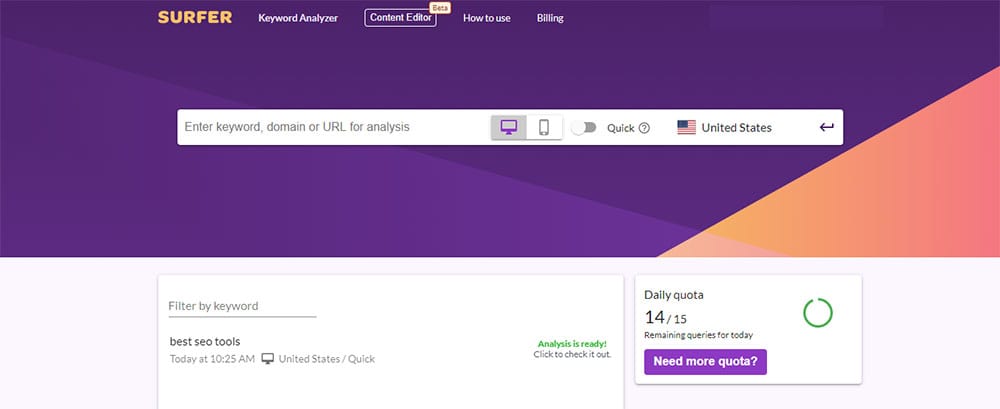
Surfer SEO uses a lot of numbers and statistics. This is a lot of information to understand and can be off-putting to any user. Instead of an interface which is full of existing data, the workflow is simplified for the user. The website details where to start and how to get the information required in a quick and painless manner. This workflow is easy to follow, and does not take a lot of effort. This makes the whole process easy to understand.
Clean Interface
An analysis tool is almost never clutter free. There is a tendency to fill up the page with every available piece of information and to have graphs of every kind. Surfer SEO goes against this trend by providing a simple clean interface. There is an emphasis on making it understandable. It also good looking and presentable. You can use Surfer SEO during a status meeting and the participants would understand the data better, and be impressed that non-essential information was not shown onscreen.
Data-driven SEO Strategy
In current SEO strategies, most practitioners develop their black-box testing to understand search engine algorithms. There is a lot of trial and error. The idea is to find out through testing what the algorithm is.
In contrast, there is a new data-driven SEO strategy. It collects all available data regarding the search results and from there formulate a strategy for a website to follow. This assumes that what the high ranking is doing is working and that it can be replicated by other websites. Following this logic, it only takes a lot of website parameters, and hopefully, following these, a metric is found and this can be followed to rank.
A data-driven strategy does not necessarily need or require any other SEO strategy other than which can be used on the website. It does not take into consideration the age of those websites which rank high on SERP. It also does not require plenty of backlinks. What it depends on are different parameters which can be found in the high-ranking websites. It assumes that replicating the characteristics of these websites should lead to the same results.
Depending on the software, there could be as many as a hundred websites surveyed for hundreds of different parameters. Surfer SEO uses less than 50 of the top ranking websites, polling them for 100-500 parameters or ranking factors. After analysis, Surfer SEO will provide recommendations for improving the succeeding posts.
With this method, Google can change algorithms overnight, with the resulting change in SERP, and yet Surfer SEO would still have recommendations which should work. SERP change is expected because of the competition. Websites are constantly changing to get ahead of other websites and this reflects on the ranking which also usually moves.
TFIDF: The Core of Data-driven Algorithms
An important statistic in data-driven algorithms is “term frequency times the inverse document frequency.” It is a measure of how significant a keyword is, not just in the document, but across all documents in a collection or body.
Term Frequency refers to the number of times a word is used in a document. Higher frequency means more significance. Document frequency is the number of documents in a body or group, which contains the term. It does not matter if the term is used many times in a document, it is the document which contains the term which is counted. Since the inverse document frequency is used, it means that if a term is used too often, or it is too frequent, then its significance becomes lower.
TFDIF is then computed by counting the instances of a term in a document, and divided by the number of documents which contain that term.
With this metric, academic, scientific, medical and research papers would have a higher impact on the ranking of a post.
Google uses this statistic in its algorithms. Data-driven SEO tools consider this as a ranking factor to consider. Digital marketers also use TFDIF effectively in choosing their keywords.
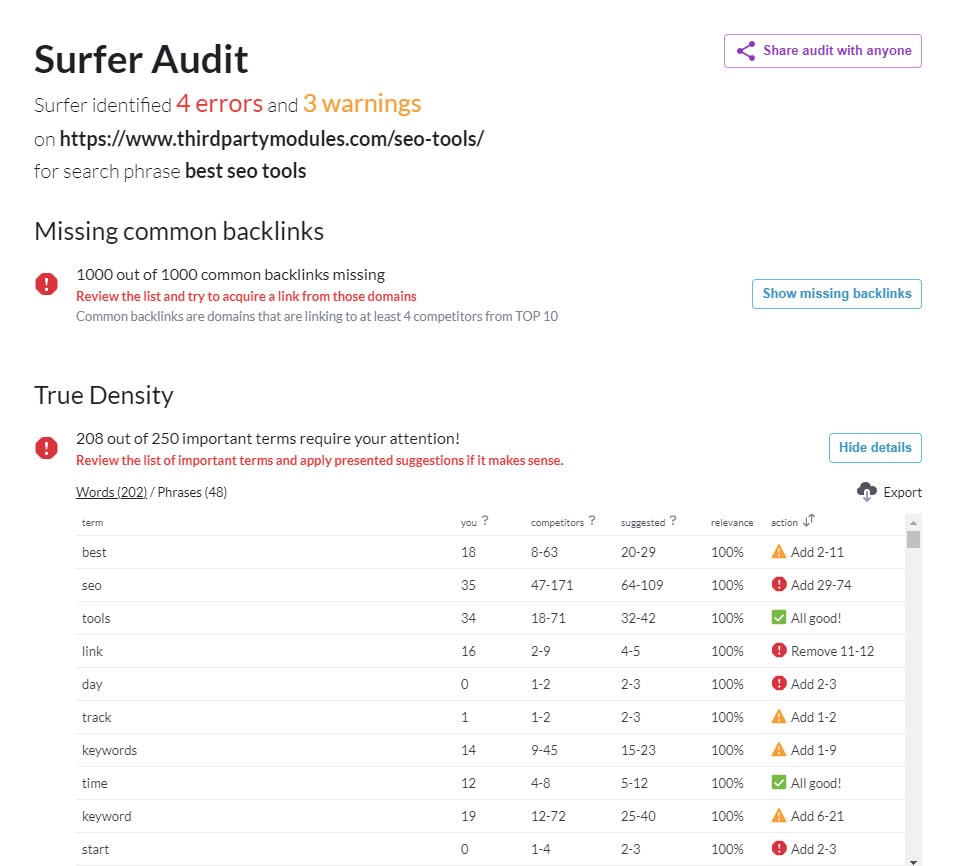
Content optimization with Surfer SEO starts with targeting keywords with a high TFDIF value. This is not an absolute value, however, the relative value could be used instead. A keyword is chosen according to the searches with high term frequency, but with a small number of website (document) frequency. This effectively creates a smaller number of searches, in the thousands may be as few as several hundred, but since there are only a few numbers of websites which carry this keyword, there are better chances of getting traffic.
On-page SEO is about content optimization. The page is written to increase the chances of being seen on SERP by following the guidelines. Surfer SEO uses these metrics to provide an idea of the competition for a particular keyword. Websites are not competing against Google or the search engines for better SERP. Instead, they are competing with other websites in providing the best compliance to the search algorithms.
To get ahead of the competition, and to rank on the first page of SERP, a website does not have to beat with all the websites in the world. It only needs to compete against a small subset of websites, with the same high TFDIF keyword.
Structured Data Analysis
This new feature takes an in-depth look at you schema markups for each of the top SERP. Each of the URLs on the SERP is analyzed and compared with the user’s website. This allows the user to adjust and revise the website according to the top competitors. This is a big advantage for several reasons, primarily because website admins and developers seldom analyze their own schema diagrams. For another, this helps educate the owner about the use and relevance of schemas to the search rankings.
True Density in Audit
The Surfer website Audit formerly had a “Missing Common Words & Phrases” section. This has been replaced by the True Density. It analyses the occurrence of keywords, their page and website density with emphasis on whether it is used too much or not enough in the web pages.
The analysis of keywords in this manner gives the user a list of important words as far as the website visitor or search engine user is concerned. This is a view into the search user’s intention. It can provide the website owner the opportunity to adjust and revise the website to meet visitor expectations.
Content Editor
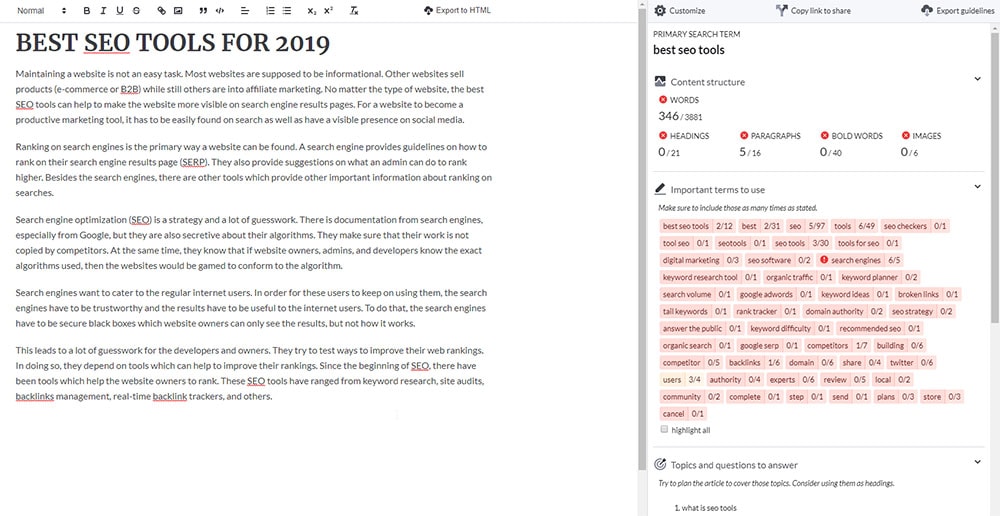
There is a big disconnect between copywriters and SEO practitioners. The Content Editor is not just an attempt to bridge that gap, it also proves that it can present the solution to both parties in an elegant manner. The Content Editor is a big advantage over other SEO tools. It is not just a regular editor, it also tallies keywords for a website or the web page. This is presented as a target for the content being written. The keyword goals are presented as a list of keywords and phrases. These are associated keywords and phrases, which are used on the website, as well as those used by top websites on the SERP. In addition, there are some other suggested words which can be helpful to the rankings. This feature is more aggressive than it seems. All that the copywriter or SEO practitioner needs to do is to write the article in an authoritative manner. A very powerful feature which makes this SEO tool a cut above the rest.
Surfer SEO Pros and Cons
PROS:
- A comprehensive but easy to follow workflow. You can get started as soon as possible.
- Up to 500+ ranking factors used in comparing a given website with other websites high on the SERP.
- Semantic analysis. It shows a comparison of the keywords used between the top websites.
- Popular words and phrases and a content editor. This lists other words and phrases commonly used in the other websites. This gives an idea of what topics to discuss in posts. At the same time, while the article is being written on the Content Editor, the occurrence is being tallied against a list of suggested keywords and their frequency.
- Multiple views. It provides an SERP view, a Table view, and a Chart view.
- Audit. It uses predefined ranking factors to compare the top 5 websites on the SERP and compared with any other website. This tells the user how to revise their post.
- Easy to use. The workflow is not only simple to follow. The results are also actionable, easy to understand and use.
- Uses all available information about the top websites and uses this information for recommendations to improve the page. It does not require any other factor beyond what can be revised on the page.
CONS:
- Limited number of queries per day. Depending on the subscription plan, there can be only up to 50 queries per day. For a big Agency, 50 queries could be not enough.
- Limited number of ranking factors. There are only 80+ ranking factors in the report.
- Transparency. The metrics of the other websites is not shown, only their average.
Conclusion
Surfer SEO is a powerful tool for data-driven website SEO analysis. It is a solid performer, with an impressive feature set. Considering its feature set, and ease of use, it is the best among SEO tools available at the moment.
Start your
7-day Trial for only $1
You may also like:

